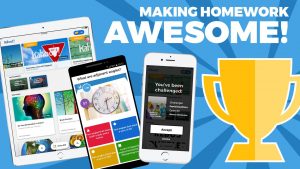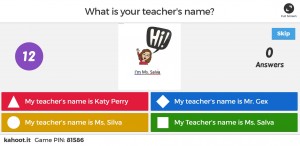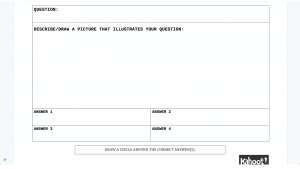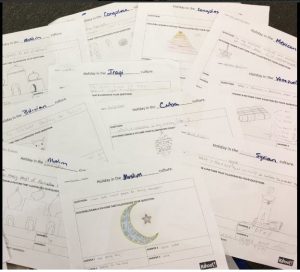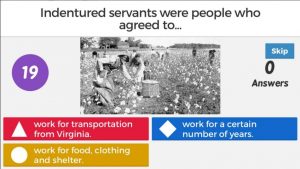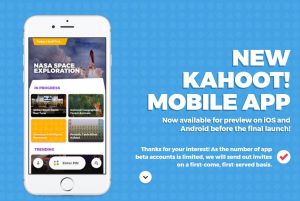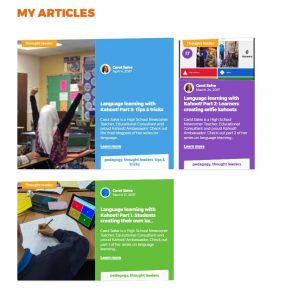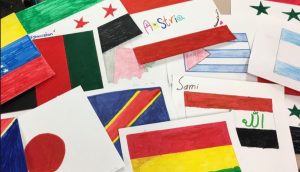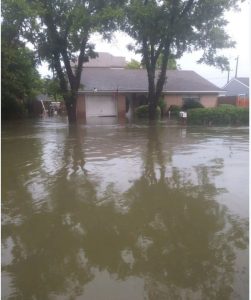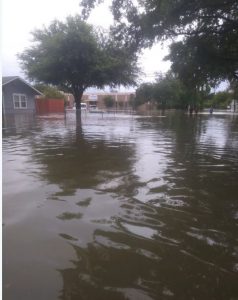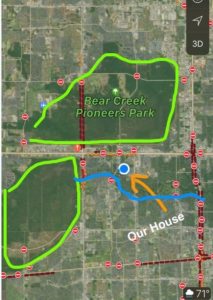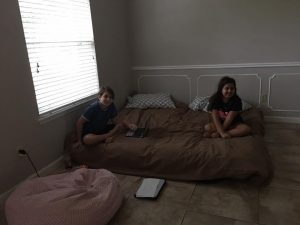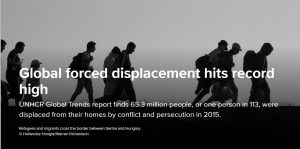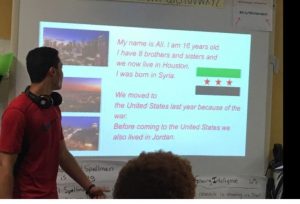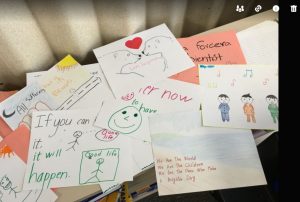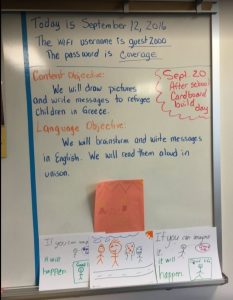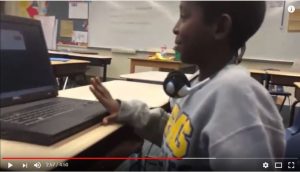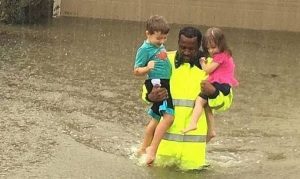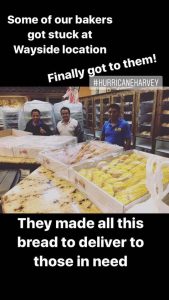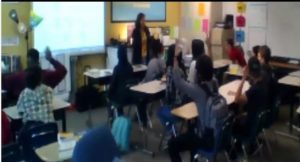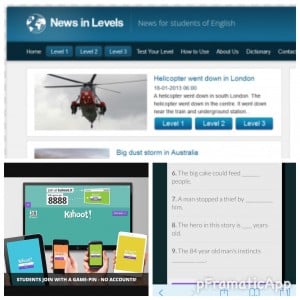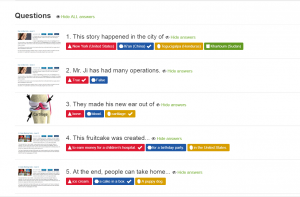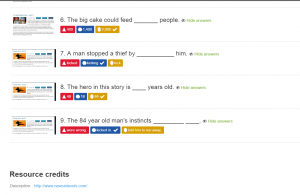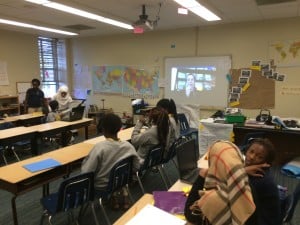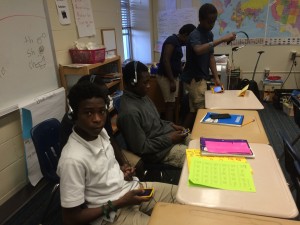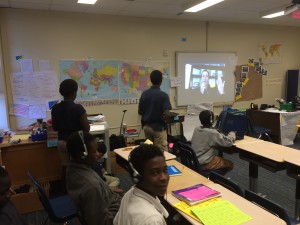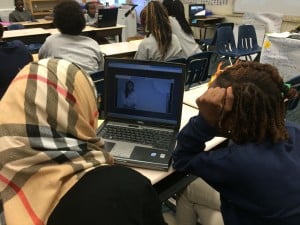It’s here! The Kahoot mobile app is now available to everyone and it is THE BOMB!
 Just download the new app (just like any other app) and start challenging your students to your Kahoots for homework, during class or any time of day. They can even challenge each other and find other content games to play.
Just download the new app (just like any other app) and start challenging your students to your Kahoots for homework, during class or any time of day. They can even challenge each other and find other content games to play.
 I want to go on the record of saying that I LOVE the app for English Learners. I had to do NOTHING extra. You guys know that I am all about practical. What is more practical than doing nothing extra? You just have the kiddos download the app and you select “Challenge” and the Kahoot you would use in class is now able to be played by your students on their own. On the go!
I want to go on the record of saying that I LOVE the app for English Learners. I had to do NOTHING extra. You guys know that I am all about practical. What is more practical than doing nothing extra? You just have the kiddos download the app and you select “Challenge” and the Kahoot you would use in class is now able to be played by your students on their own. On the go!
AMAZING!
To try it out, just download the app yourself and then go to your Kahoot dashboard. Select “Challege” when you would normally launch a game. You’ll select the timeframe for it to be completed and then you’ll get a PIN to give to students. I would suggest that you pretend you are a student and plug it into your new app. That’s it. You’ll see that your Kahoot has been chunked into 3 question challenges. It’s shockingly easy to use.
Here is the link so you can read more about this on Kahoot’s site. In typical Kahoot awesomeness, they have created a Kahoot to learn more about the app. That would be fun to play with your faculty and you’ll walk away a hero!
I have lots of other Kahoot resources if you teach ELLs. I’m reprinting some of that information below. But there is a reason that this platform is used in almost every country in the world. It’s great for all learners.
Thanks for playing!
Happy Kahoot’ing!!
Carol
*************************************************
Why did I include two pages of Kahoot in my Boosting Achievement book? Read on. I should have included more! I have had so many more experiences with the platform!
I have had many roles in my career as an educator but I can honestly say that being a Kahoot Ambassador, is a true highlight.
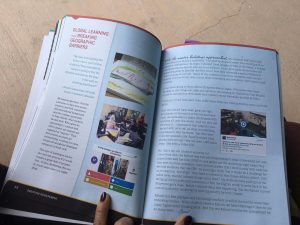 Kahoot is engaging. There is no doubt about that. Last year, there were only 6 countries in the world that did not play a Kahoot. If it is that popular, we owe it to our learners to capitalize on student engagement. Here are just a few of the uses and benefits I have discovered. You’ll find examples of all of these in different blogposts on this site:
Kahoot is engaging. There is no doubt about that. Last year, there were only 6 countries in the world that did not play a Kahoot. If it is that popular, we owe it to our learners to capitalize on student engagement. Here are just a few of the uses and benefits I have discovered. You’ll find examples of all of these in different blogposts on this site:
- Accelerates Academic Language Acquisition with Visuals and Opportunities to Spiral Vocabulary
- Accelerates Basic Second Language Acquisition with Opportunities to Practice and Internalize Language Structures
- Supports Authentic Language Production about Content
- Promotes Higher Order Thinking by Allowing Students to Create Content Assessments
- Provides Templates/Scaffolds so That ANY Student is Able to Create Assessments
- Helps us Easily Break Down Classroom Walls to Play Connected Kahoots with Others
- Facilitates Global Collaboration Among Students in Creating Quizzes
- Facilitates Global Collaboration Among Educators
- Provides a Practical Way for Educators to be Culturally Responsive in our Teaching.
- and so much more!
I have many blog posts with examples of the above if you search in the menu tabs, but where can you start? I start on the first day of school with a Teacher #SelfieKahoot.
After that, I pass out the planning templates that are provided by Kahoot. Each student tells one thing about themselves and the positive classroom culture begins to take shape.
But don’t stop there, once your students create assessments about themselves, they are ready to make assessments about your content.
We used the planning templates to outline a research project, to have students create reviews for state assessments, to quiz other classes.. the content and language possibilities are endless. When students create assessments, they are working at the highest cognitive levels. And with Kahoot, they want to!
My area of specialization is Non-English Speakers with Minimal Education. With the help of Kahoot, I am able to capitalize on engagement and help students propel their language and learning. But what I am doing works for ALL kids. Check out this blog post on how to use Kahoot for ESL/Non-English speakers. It comes with a 30 min video you could use for PD. You’ll see that the teaching strategies would be helpful to most learners as we all need visuals and opportunities to practice the academic language.
You might also be interested in this blog post on how to create a Holidays Traditions Kahoot (any time of year) that will easily break down the walls of your classroom and facilitate global thinking.
By exploring the menu tab, you’ll find many more posts on how the tool is helping me propel the learning of ESL and non-ESL students alike. And it can help teachers learn as well! We want awesome learning too! My strong recommendation is that administrators and specialists use Kahoot in faculty meetings and during PD sessions. You are modeling a classroom tool and your participants will be engaged!
Do you know about JUMBLE? It is a great Kahoot offering that will have your students ordering/sequencing things like words, events, dates. This post from my talk at SXSW has better explanation and a link to a practice Jumble I made. So many content areas can use this feature and it is great for ESL!
AND THE BIG NEWS right now is that Kahoot is about to launched a mobile app this month! Teachers at ISTE were thrilled to see the demo because it will allow us to easily push challenges out to our students for homework or at any time.
So please do look around the site for more examples. Or reach out to me at carolsalva1@gmail.com or on Twitter at @MsSalvaC. I am happy to shoot you a link with examples of the uses I’ve mentioned aboove.
Lastly, I would refer you to the Kahoot Blog. You’ll find three articles there that I have written about how to use the platform with ESL students in different, high-impact ways. Those articles can be found here.
If you have not used Kahoot, just start quizzing with it. Then you’ll see how easy it is! All these ideas will start making a lot more sense and you can reach out to me or the Kahoot K!rew for support. They have never failed me.
Hope this is helpful.
Happy Kahooting!
Carol
